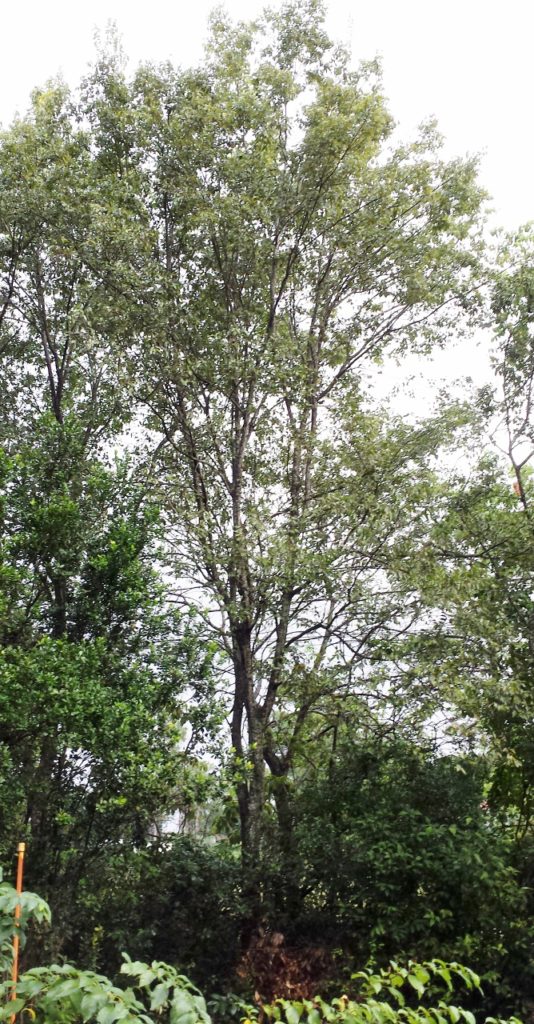
Hackberry
Celtis laevigata
Hackberry is native to the eastern and central U.S. and most of the East Coast down to Dade County Florida. Hackberry will grow in all but the most infertile soils and tolerates occasional flooding for short periods. It will not grow where it gets much salt breeze or water.
Hackberry, also known as Sugarberry or Southern Hackberry, is found inland in moist hammocks. The east side of Lake Okeechobee has 60 foot tall Hackberrys mixed with 80 foot Mastic and Bald Cypress, Red Mulberry and Live Oak. There is an understory of Wild Coffee, Marlberry, Graytwig, White Stopper, Native Boston Fern, Coastal Foxtail and Wild Plumbago. If you want to see this tree in a natural setting, just walk the Port Mayaca Trail where Route 76 ends at the lake.
If you go during the spring, keep a look out for the American snout, tawny emperor and question mark butterflies which lay their eggs on young Hackberry leaves. In the fall, migrating birds eat the sweet, edible to humans too, small berries. Local and migrating birds and other wildlife can find fruit, insects and young leaves to eat on this tree all year long.
Leaves drop in the fall making the fruit more visible to wildlife. Lobate lac scale sucks the sap from the stems and leaves and drops their waste onto the leaves below. This will cause a blackening of the foliage which is shed and replaced with clean new growth each spring. Hopefully a predator of this introduced pest that feeds on many plant species will be released soon to control it. Some suckering may occur, which is fine in an open area, yet may need control in a tight spot.
A portion of the yard with deciduous trees like Hackberry, Pond or Bald Cypress, Red Maple, Red Mulberry, Florida Elm and Winged Sumac will give fall color and vibrant spring growth. There are also interesting corky knobs on the trunk of Hackberry that make this tree easily identifiable from a distance.